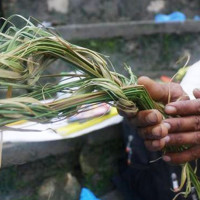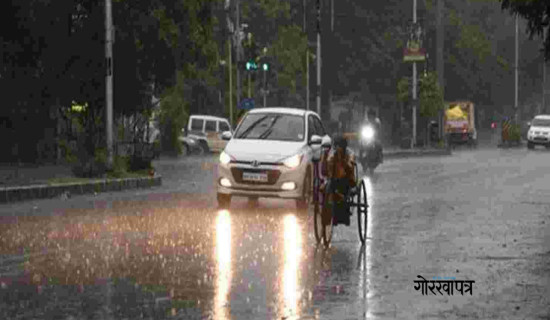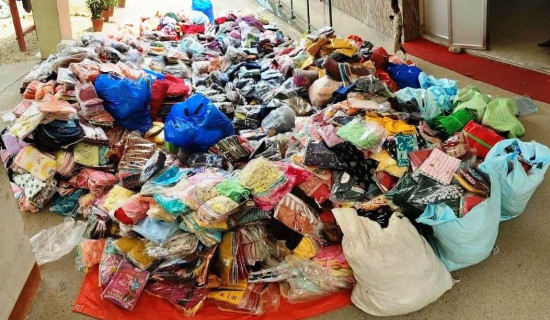- Saturday, 23 August 2025
Madhes faces looming water crisis: Report
By A Staff Reporter,Kathmandu, Aug. 23: Delayed rainfall, along with depleting groundwater levels and gaps in water supply infrastructure, could lead to an acute water crisis for the Madhes Province in the coming years, according to a new study
A new situational report from the International Centre for Integrated Mountain Development (ICIMOD) has found that a combination of erratic and deficient rainfall, along with depleted groundwater levels, could have led to the drought conditions that have been affecting Madhesh province in the south-eastern Terai region.
Earlier in July this year, due to the severity of drought conditions, the government declared the province ‘drought-stricken’, a press statement issued by ICIMOD on Friday said. This water deficit also impacted the production of rice – a key crop cultivated in the province, it added. ICIMOD and the Ministry of Agriculture and Livestock Development (MoALD) mapped 21 districts in the Tarai belt, focusing specifically on rice-cultivation, and found that the districts of Dhanusah, Mahottari and Siraha would also be impacted.
Chet Bahadur Roka, Senior Statistics Officer and Chief of the Agriculture section at MoALD, commented, “The shortfall of rice does not only imply a challenge to food security in the present drought context, but also long-term challenges to nutrition, well-being and affordability of food grains for vulnerable households in the coming years.”
He said, “To avoid this scenario, measures would include encouraging farmers to explore diversifying their crops, and for there to be provisions for early-warning advisories so that farmers are better prepared.” The MoALD had also reported reduced paddy plantation rates in July, which stood at 51.82 per cent as compared to 92 per cent last year. A shortfall of nearly 450,000 metric tonnes of rice is expected, leading to around a 10 per cent dip in national rice supply.
The province has also been facing a water shortage due to depleting groundwater levels -- the root of which has been traced back to the Chure hills.
Saswata Sanyal, Disaster Risk Reduction Lead at ICIMOD, comments, “A degraded Chure region means cascading risks downstream, as seen in the province. Given that it’s an ecologically sensitive region, adopting and reviving nature-based solutions, including measures like springs, wells and ponds, would help in reducing these impacts, which are rather difficult to perceive.”
Existing gaps in infrastructure, including in irrigation networks, canals and household water sources such as hand pumps, mean that the impact of the drought had become an acute crisis.
Neera Shrestha Pradhan, Cryosphere and Water Lead at ICIMOD, said, “Such adverse conditions always impact the most vulnerable and marginalised areas disproportionately. We are seeing a pronounced impact of climate change on women, children and socially disadvantaged groups.”
According to her, “We are presently working with municipalities in the Lower Koshi to inform local-level planning where factors like gender and social inclusion are factored into disaster responsive planning.”
With the government announcing the province as “drought-affected”, around Rs. 170 (US$1.2 million) has been allocated for small irrigation systems such as shallow tube wells, which bring groundwater to the surface using suction lift pumps.
The study is based on ICIMOD’s assessment of Earth observation tools, including vegetation condition data collected from satellite imagery (from Sentinel-2 and MODIS). The study’s findings were integrated into a national portal that provides monitoring and early-warning advisories for drought conditions in the country, the statement read.
Experts contributing to the study have said that, while short-term measures like shifting to less water-intensive crops are advised, there is a critical need for longer-term planning.
Such initiatives include taking a watershed approach, a framework that considers the interconnectedness of land, water and other resources to achieve sustainable resource management. In this case, upstream changes in the Chure hills include ensuring mining in the region is sustainable.
Investing in watershed management planning is also crucial for long-term water security, as is reducing the scope of cascading hazards in the region.
















